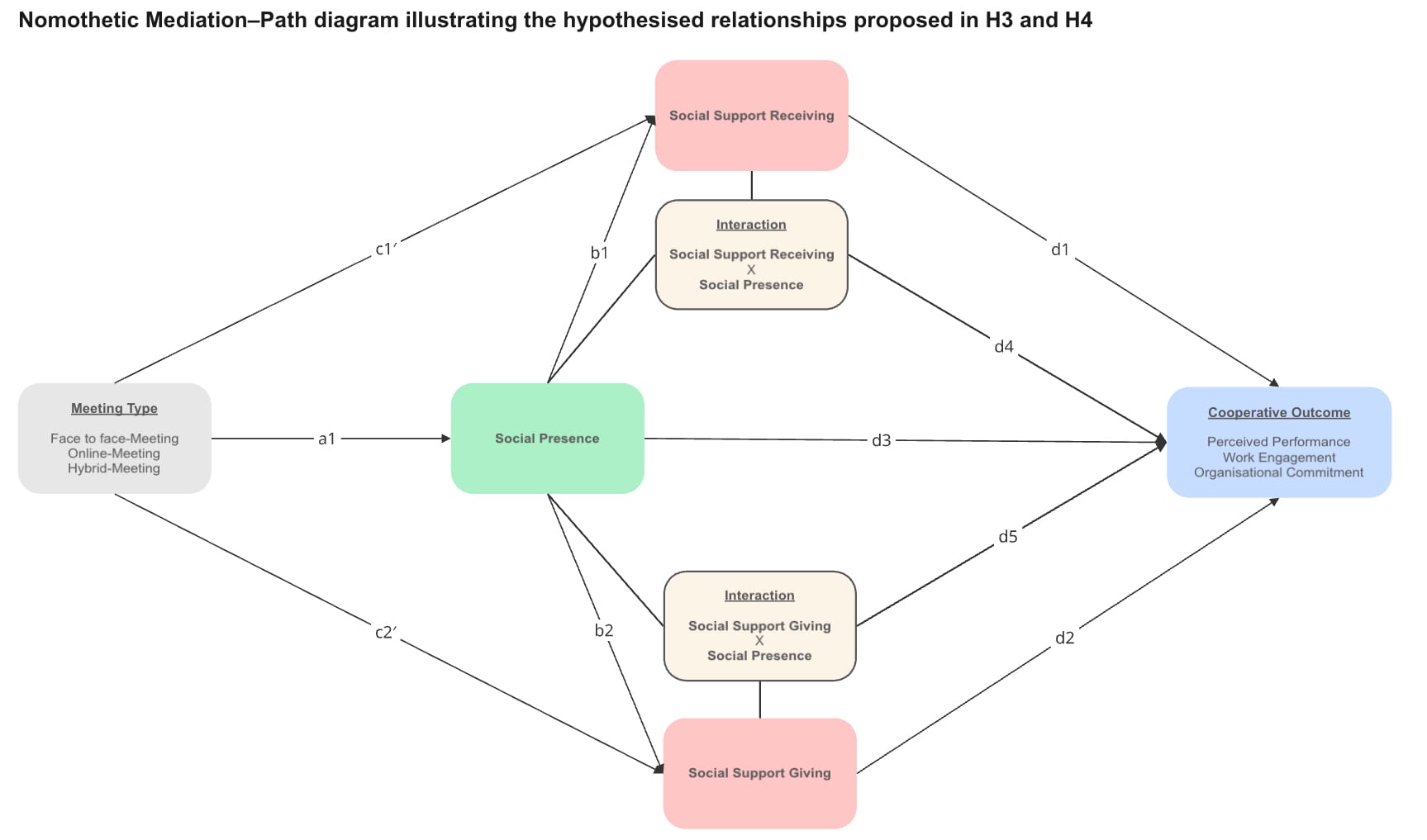The Role of Social Support in Team Meeting (Face-to-face- vs. Online- vs. Hybrid-Meeting)

Topic
Set against the post-pandemic blend of return-to-office processes and persistent hybrid meetings, this study asks whether social support still circulate when teammates are split between face-to-face and online. Anchored in social-support theory and social-presence research, it compares face-to-face, online and hybrid meetings to see whether the perceived availability of assistance—and the sense that colleagues are “reallness”—survive the medium shift and, in turn, colour performance, engagement and commitment
Relevance
Different type of team meetings is no longer an experiment but the default rhythm for many organisations, yet managers still lack evidence on the social mechanics that keep dispersed teams cohesive. While technology can connect any desk to any room, it can also exhaust attention and mute informal help. Understanding whether the reciprocity of social support and the social presence of colleagues survive the jump from office to webcam is therefore pivotal for safeguarding well-being, retention, and collective output in business life.
Findings
After stringent cleaning, 143 participants from 154 participants datasets from German-speaking Switzerland remained. Received and given social support were strongly correlated in every modality, confirming a robust norm of reciprocity. Mean levels of social support and perceived social presence did not differ significantly between face-to-face, online, and hybrid meetings. Social presence, however, shaped outcomes: in high social presence settings, giving social support boosted organisational commitment, whereas conspicuously receiving social support slightly eroded it; neither pathway shifted work engagement and perceived performance.
Implications for Practitioners
- Surface support visibly and fairly: use reaction icons, “shout-out” rounds and speaking-time dashboards so reciprocal help stays salient across all locations.
- Calibrate—don’t maximise—presence: once audio and video are clear, run 50-minute blocks with camera-off micro-breaks to curb fatigue.
- Praise giving, shield receiving: celebrate contributors publicly but channel unsolicited aid through private chats to protect autonomy.
- Rotate facilitation and watch airtime: structured turn-taking and chat summaries prevent “room-versus-screen” hierarchies.
Methods
A cross-sectional, quasi-experimental online survey captured participants’ most recent team meeting. Spearman correlations charted reciprocity, and one-way Welch ANOVA tested mean differences meeting types. To visualise the hypotheses within a nomothetic model (mediation path diagram) was created. PROCESS mediation analysis, combined with multi-group SEM incorporating interaction terms, then examined how social presence linked meeting type, social support, and the outcome variables—perceived performance, work engagement, and affective organisational commitment.

